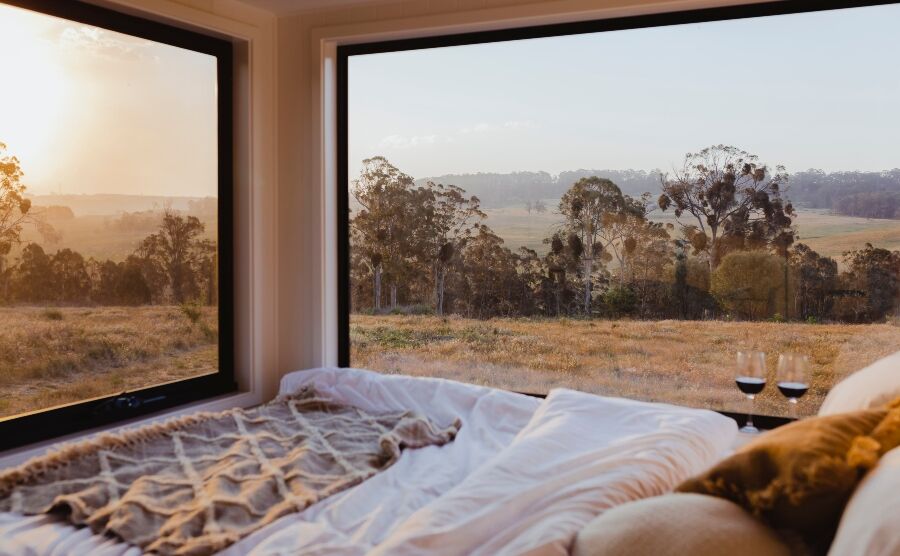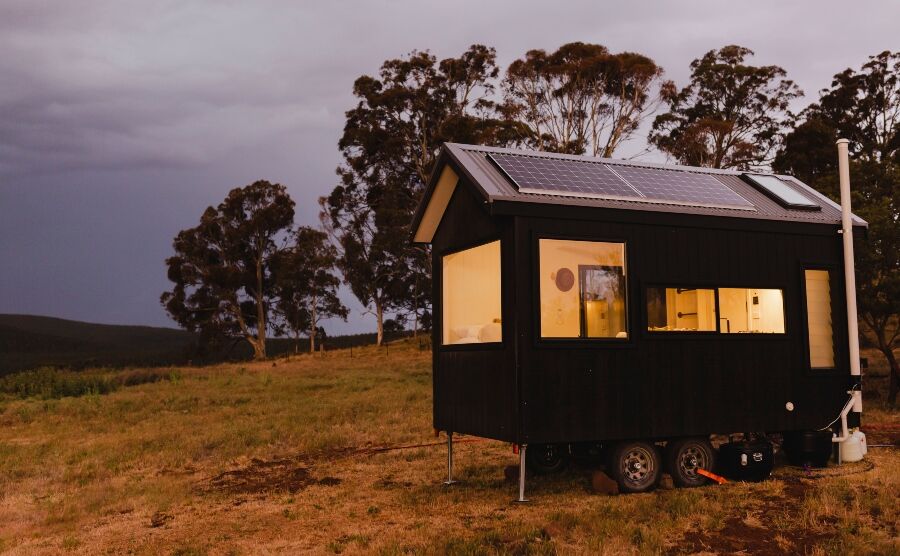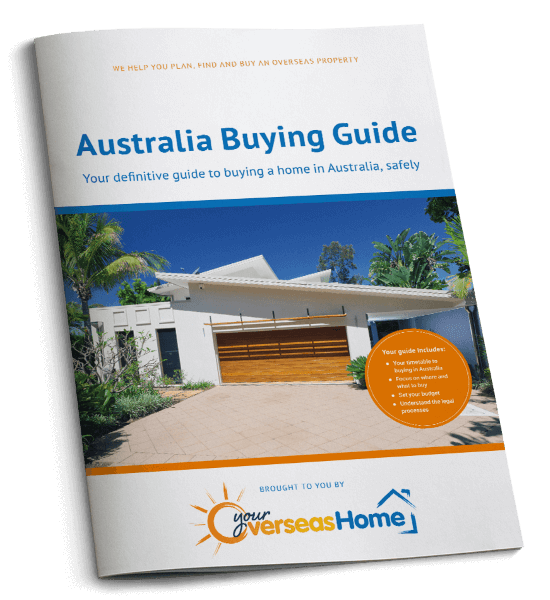Tiny homes and pods are becoming more popular in Australia. Cheaper, easier to maintain, more eco-friendly and often found in beautiful locations, these dwellings are perfect for those who don’t mind sacrificing space in return for breathtaking views, can’t afford to buy a larger property or are simply wanting to downsize.
It’s no secret that houses prices in Australia, especially in Sydney and Melbourne, are among the highest in the world. Which is one of the reasons why tiny homes and pods – typically no larger than 400 square feet – are rising in popularity.
If you’re considering buying a smaller property in Australia, these innovative homes could be a good option.
What are the benefits of living in a miniature home?
As mentioned, one of the main benefits of tiny homes is that they cost less. According to building experts Architecture, AU, the construction cost of a tiny house is typically between $80,000 and $160,000. Because they can be built for less money and more quickly, they could be a solution to Australia’s affordable housing and homelessness issues.
In addition to being cheaper to buy, tiny homes have lower maintenance costs, plus they are easier to clean. Many are built using sustainable materials and feature off-grid capabilities, such as solar panels, composting toilets and rainwater tanks. This not only reduces your environmental impact but can also significantly lower your utility bills.
Miniature homes are particularly appealing to those pursuing a simpler, more minimalist lifestyle, as the lack of space means there’s no temptation to hold onto any unnecessary belongings.
Many of these small homes are built in gorgeous locations – on the coast or in the desert, for example – allowing residents to fully appreciate and celebrate Australia’s spectacular landscapes. Others have wheels, offering ultimate flexibility and the chance to explore every corner of this majestic country, from the rolling vineyards of South Australia to Western Australia’s rugged coastline.
Finally, if you’re not planning to live in your tiny home full time, they can make excellent investment properties. Thanks to websites like Airbnb, it’s never been easier to make money from renting out your tiny home as a holiday let. Tiny homes in regions like the Margaret River or the Great Ocean Road, for example, often attract tourists looking for unique, sustainable accommodation. Pods can also be a smart choice for landlords looking to add a secondary dwelling to an existing property.
Where can I buy a tiny home?
Miniature homes can be found all over Australia, with more options as the market continues to grow. Reputable builders like Haven Pods and Aussie Tiny Houses offer a range of designs tailored to different needs.
If you prefer a ready-made option, keep an eye on local property listings. Sites like Domain or realestate.com.au occasionally feature tiny homes for sale, either as standalone properties or as part of larger plots of land.
Legal considerations for UK and US buyers
If you are a UK or US property buyer, you would need to apply for approval from the Foreign Investment Review Board (FIRB) before purchasing any residential property in Australia, including a tiny home.
Foreign buyers are generally encouraged to invest in new dwellings, which can include tiny homes, as this helps increase Australia’s housing stock. Non-resident foreign buyers are generally prohibited from purchasing established dwellings. However, temporary residents can apply to purchase one established dwelling to use as their residence while living in Australia.
If you plan to build a tiny home on vacant land, you would need to ensure construction is completed within four years.
It is advisable to seek independent legal advice to ensure compliance with all FIRB requirements and to understand any specific conditions that may apply to your situation.
Other legal considerations for buying a tiny home
Unfortunately, living in a tiny home isn’t always possible due to local government planning schemes, restrictions on occupancy and connection to utilities. Local councils are beginning to make it easier to live in a tiny house, but before you commit to buy, it’s wise to bear in mind the following legal considerations:
Zoning and council regulations
Before purchasing a tiny home, it’s vital to understand local council regulations regarding zoning and land use. Each Australian state has different rules, so make sure you check the government website for the state you are planning to live.
Land ownership
If you’re considering placing a pod or tiny home on your land, you’ll need to ensure the site is suitable. Rural areas often have more lenient planning rules, but you may need to invest in utilities and infrastructure like septic systems or water connections.
Financing your tiny home
Financing a tiny home can be different to purchasing a traditional house. While some lenders offer loans for tiny homes, you might find it easier to buy outright. Be sure to consult with an Australian property expert to explore your options.
Tips for transitioning to a more compact home
It’s important to understand that living in a tiny home is a complete lifestyle change. If you’re certain that compact living is for you, these tips will help you adjust:
Think about the location
Unless your tiny home is mobile, location is one of the most important factors to consider. If you’re planning to use it as a holiday home, proximity to beaches, national parks or other attractions might be key. For full-time living, consider accessibility to amenities like shops, schools and healthcare.
Plan your layout carefully
Every square metre matters in a tiny home. Opt for multi-functional furniture, like fold-down tables or beds with built-in storage. Many tiny home providers offer customisable layouts, so you can design a space that suits your needs.
Declutter and simplify your life
Living in a tiny home often means embracing a simpler, more minimalist lifestyle. It can take time to adjust, but many find the rewards – financial freedom, reduced environmental impact and a closer connection to nature – well worth it.
Summary
Tiny homes and pods offer flexibility, eco-friendliness and investment potential. Whether you’re downsizing, investing or looking for a sustainable retreat, these innovative dwellings provide a way to enjoy Australia’s unique lifestyle without the financial burden of a traditional home. With proper planning and expert advice, buying a tiny home could be your ideal path to living in Australia.
You might also like:









